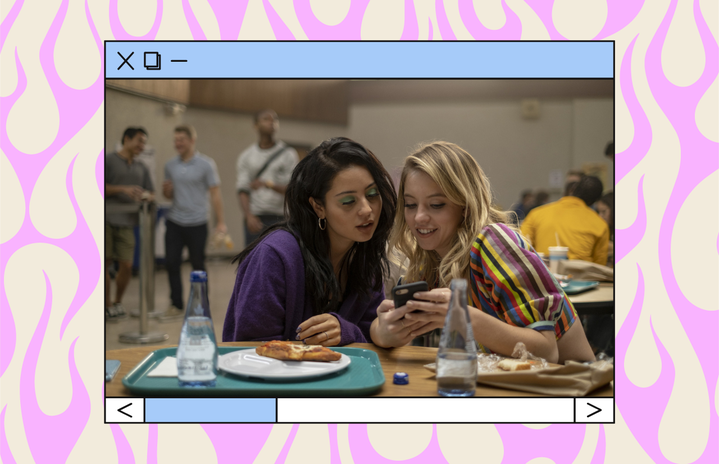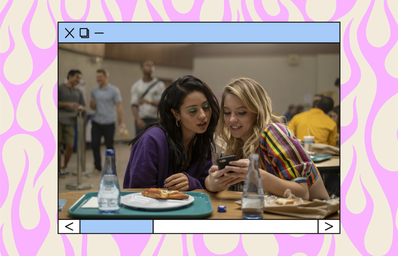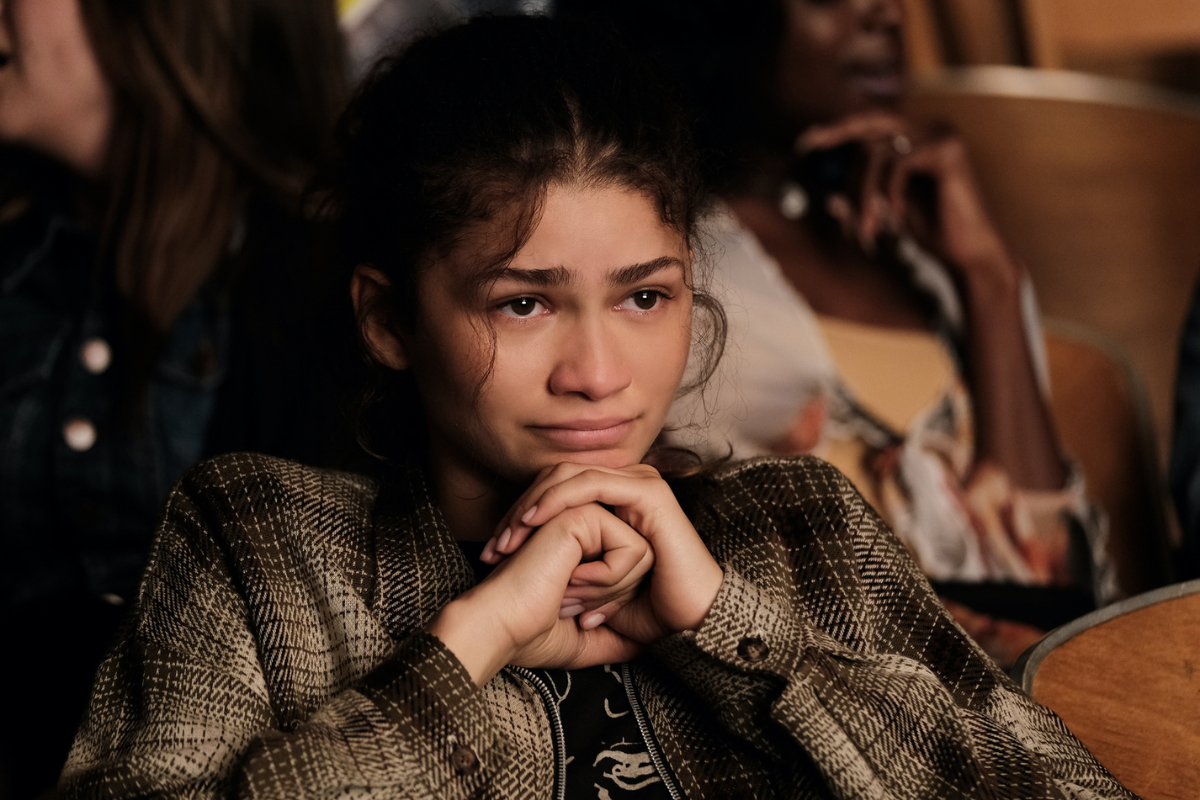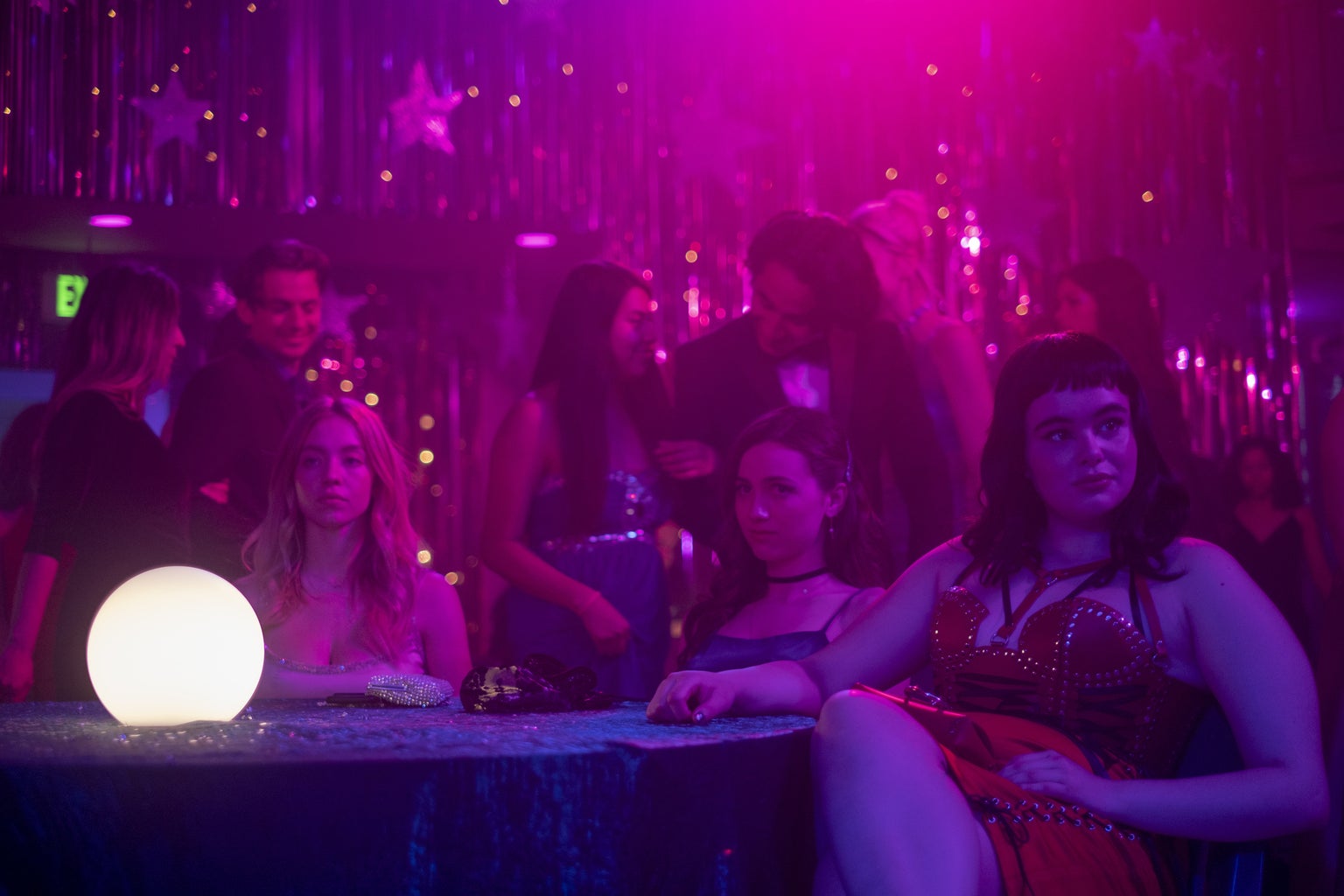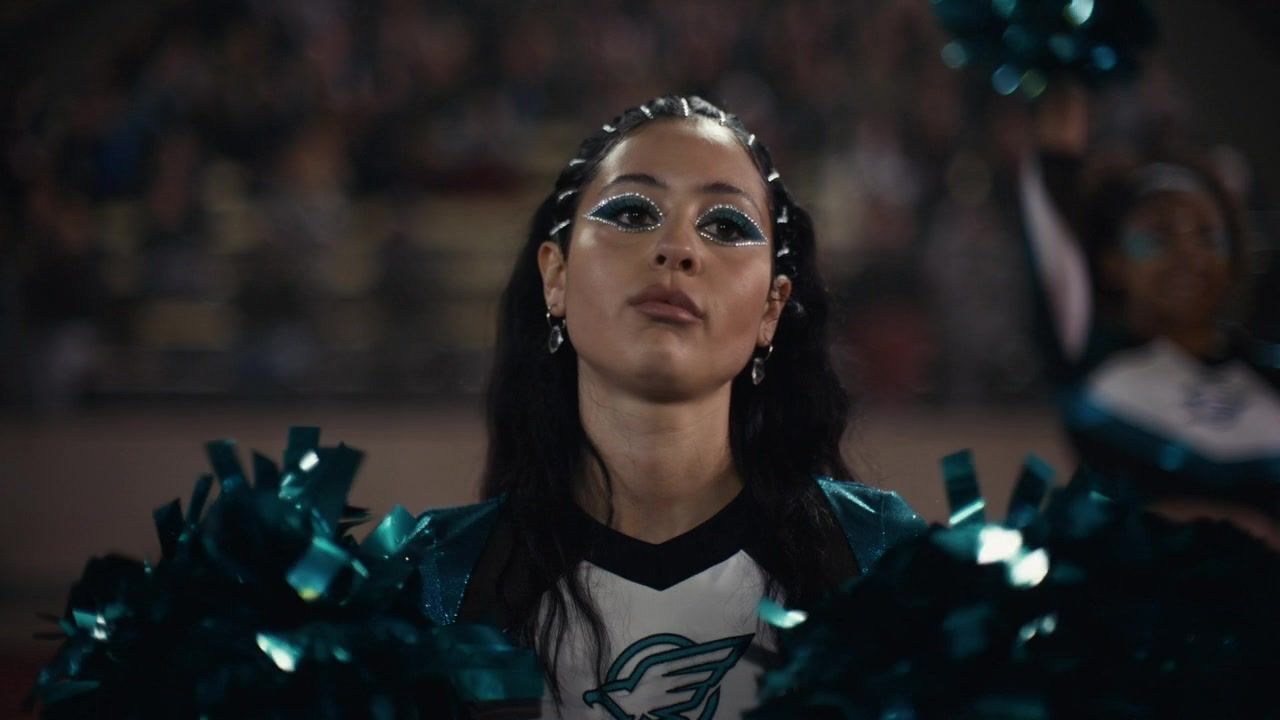Here’s something that I’ve noticed, I only like rap music if it’s in Euphoria. Season 1 bombarded viewers with rap songs that only made the teen angst-filled scenes feel more lively and realistic. However, in season 2, the show treats its music as if it’s a mood playlist on Spotify. Some moments are full of 90s/2000s R&B, while others include 70s deep cuts and other include deeply underrated 80s hits. Not to mention the score music could easily become a number hit, very rare for a TV score. This bombastic usage of a wide variety of music is very rare for any show, but especially a teen show.
Many TV shows are very musically driven, like Gossip Girl, Riverdale and Glee. Shows like these use musical guests and even musical performances done by the cast to drive the story. However, on Euphoria, the soundtrack and score drive the show just as much as the original music. Between an epic score, perfectly chosen needle drops on the soundtrack and the inclusion of original music, Euphoria is the ultimate musically driven show.
Euphoria’s pilot surrounded a house party. The soundtrack was filled with typical music you’d be guaranteed to hear at a Gen Z party, rap music, and with HBO’s lack of restrictions, they had ample opportunity to use explicit versions and explicit songs as much as they wanted. Tommy Genesis, Jamie Xx, Megan Thee Stallion, Migos, Beyoncé, and A$AP Ferg were all in the first episode. However, the first episode also had mellow, oldies music like “Can’t Get Used To Losing You” by Andy Williams. This realism and mixture showed us that while the show will be extremely realistic in terms of the music teens really listen to (most of the music is explicit, thank you HBO), it will also use the “Spotify effect” to their advantage.
Dare I say it, but Euphoria’s score is quite revolutionary. There was truly nothing like it before the show aired. Never before did score music include lyrics or play on Sirius XM radio. Labrinth’s undeniable creativity and boundless inspiration also make for a unique sound unlike anything else ever heard on TV and film. His pop and R&B mainstream music background is one of the reasons its score is also so profitable, being streamed on Spotify and everywhere else music can be streamed.
Along with the original score, Labrinth and series creator Sam Levinson has also let Euphoria be an outlet for original music. By casting notable music talents like Zendaya and Dominic Fike in Season 2, they have the ability to use music in such a unique way. A way that combines that of Glee and Gossip Girl. The finale of Season 1 ended with Zendaya’s show-stopping performance of her Labrinth’s collaboration “All For Us,” while Season 2 featured original songs “I’m Tired” and “Elliot’s Song,” performed by Labrinth and Fike respectively. They also have original music written specifically for the show from real recording artists like Ericdoa, Tove Lo, and James Blake and Grammy nominated artists like Lana Del Rey’s hit “Watercolor Eyes” was used in Season 2. All these songs were chart toppers and were featured on multiple Spotify playlists including Teen Beats and Today’s Hits.
While the score and original music are phenomenal, for me, it’s the soundtrack that makes Euphoria’s musicality so unique. After I watched every episode, I immediately went to Tunefind to find out its soundtrack. They also have their own official Spotify playlist. Their music supervisor Jen Malone is GENIUS at using music to perfectly tell a story. And luckily, she’s not confined by one time period, genre or vibe, unlike most shows. Every season, episode, and moment is perfectly crafted through its music. Season one featured contemporary rap, 60s ballads and indie hits, while Season 2 featured 90s hip hop, 80s hits and 70s deep cuts.
Season 1’s vibe was youthful, regal and dreamy, represented by its consistent use of purple lighting, a color symbolic of royalty and fantasy. This was meant to represent how teenagers see themselves, as the damaged centers of the universe. And while that spotlight is often false, when it comes to pop culture, it’s often true. Youths do dictate what’s cool and have done so since the beginning of pop culture in the 20s. This is equal parts sensible and ironic when you remember that Euphoria originally set out to be an adult show about teenagers when it became the pinnacle of Gen Z 2020s pop culture.
Due to this cultured and youthful vibe, the soundtrack of the first season perfectly encompassed that, by consistently using the two most popular genres that teens listen to that aren’t part of the Top 40 pop scene, that is rap and indie. Maliibu Mitch, cupcakKe, JID, Bali Baby, Black Oshin and Grip were all used during Euphoria’s iconic party scenes, while Kali Uchis, Arcade Fire, Blood Orange, Gabriel Black, and Kilo Kish were all used in the slow, cinematic moments. However, Season 1 also used music those aforementioned adults would recognize, however they still landed with Gen Z due to their access to Spotify and Apple Music. This included Andy Williams, The Dreamliners, Bronski Beat, Too Short, and Fiona Apple.
Cross-generational music took a front seat during Season 2. The first episode was chalked full of 90s hip hop from 2Pac, DMX, and Notorious B.I.G. The third episode, which went back to the late 80s to tell Cal Jacobs’ backstory featured an amazing soundtrack in just the first 15 minutes with Depeche Mode, Lenny Kravitz, Echo & The Bunnyman, The Cult, Dan Hartman, Erasure, Roxette and iconically and deservingly INXS. Maddy’s birthday featured music from her favorite eras, the 90s and 2000s, with music from Montell Jordan and The Pussycat Dolls. This trend continued throughout the entire season with vintage needle drops from 80s rock bands like Cutting Crew and Poison, Artists from the Old Hollywood era like Judy Garland and Bobby Darin and Iconic 70s artists like Billy Swan, Can, and most notably Gerry Rafferty. However, the essence of Season 1’s rap and Indie preferences were still included with the use of Lil Wayne, B.o.B., Orville Peck, and Blaq Tuxedo.
The music either helps drive the scene, helping reveal the character’s motivations and mindset or directly juxtaposes the scenes adding irony, humor or complexity to the character’s often flawed actions and distorted attitudes. There are also often music cues in the script, with Sam Levinson’s writing being from self-described rhymic standpoint. The musical-driven writing style makes the show’s use of music triumphant, epic and impactful in ways most shows don’t entirely grasp. It also lends a rare creative freedom that most shows don’t have the luxury of. Euphoria doesn’t stick to one genre or vibe both in the writing or show, often toeing the line between melodrama and absurdist comedy, and in music, often balancing between a modern frat boy and an old soul.
The impact of the music in Euphoria is undeniable and symbolic of how Gen Z discovers and listens to music. It’s no longer strictly who’s on the radio. Gen Z can find old music and make it new again. An artist can upload a Tik Tok and end ups soundtracking a hit TV a few months later. To Euphoria music isn’t just music, it’s storytelling.
